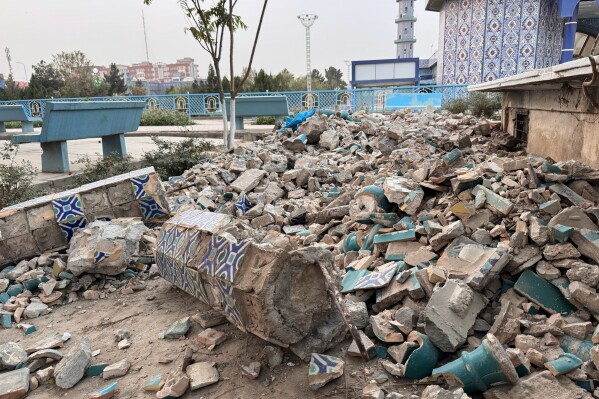A powerful 6.3-magnitude earthquake struck near the city of Mazar-e-Sharif in northern Afghanistan, killing at least 20 people and injuring more than 640 others, according to local authorities. The quake caused widespread destruction, with hundreds of homes damaged or completely destroyed, leaving families homeless as emergency teams continue search-and-rescue operations.
Widespread Panic and Structural Damage
The earthquake struck early Thursday morning and was felt across several northern provinces, including Balkh and Samangan. Residents fled buildings in panic as strong tremors shook homes and workplaces. Aftershocks followed the main quake, increasing fears of further collapses in already weakened structures.
According to the National Disaster Management Authority (NDMA), most casualties occurred in rural areas surrounding Mazar-e-Sharif, where many mud-brick and poorly reinforced houses crumbled under the force of the quake. Emergency responders and volunteers are now racing against time to locate survivors trapped beneath debris.
Hospitals Overwhelmed as Relief Efforts Intensify
Afghanistan’s fragile health system is under immense strain as hospitals in Balkh Province report an influx of patients with severe injuries, including fractures, head trauma, and crush-related complications. Medical teams from international organizations have been deployed to assist overwhelmed local facilities.
A government spokesperson called for urgent international humanitarian aid, citing the need for medical supplies, food, and temporary housing. Relief efforts have been hampered by cold weather and damaged roads, slowing the transportation of emergency materials to the hardest-hit areas.
High Seismic Risk in Northern Afghanistan
Experts note that northern Afghanistan sits along a major fault line, making it one of the most seismically active regions in Asia. The area has suffered multiple deadly earthquakes in recent years, underscoring the country’s vulnerability to natural disasters and the urgent need for stronger building standards.
“Every tremor reminds us how vulnerable Afghan communities remain,” said a field officer from the International Federation of Red Cross and Red Crescent Societies (IFRC). “The priority now is to save lives and ensure no one is left without shelter tonight.”
Aftershocks and Continuing Threat
Authorities have urged residents to remain alert, warning that aftershocks may continue in the coming days. Rescue teams are working through the night amid fears that the death toll could rise as more bodies are recovered from the rubble.
The tragedy adds to Afghanistan’s mounting humanitarian challenges, as communities already facing economic hardship and harsh weather now grapple with the devastating aftermath of another natural disaster.

